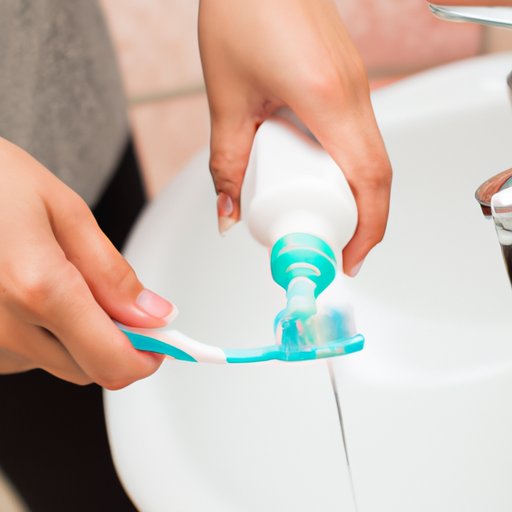
Introduction
Your toothbrush is a significant part of your daily oral hygiene routine. However, have you ever stopped to think about how often you clean it or how safe it is to use? Toothbrushes can harbor various bacteria and viruses that could pose a risk to your oral and overall health. Therefore, in this article, we will look at the benefits of disinfecting your toothbrush, how to do it right, and the various methods you can use.
Why Disinfecting Your Toothbrush is Important: And How to Do It Right
Bacteria and viruses can accumulate on your toothbrush even with regular use, and if not cleaned regularly, they can cause different oral and overall health issues. Some of the potential health risks of using an unsanitized toothbrush include:
- Reintroducing bacteria and germs into your mouth, especially if you have an infection.
- Development of oral and gum infections
- Possible strep throat or other forms of infection
Therefore, to avoid such risks, it is vital to disinfect your toothbrush regularly. The good news is there are various methods you can sanitize your toothbrush.
“5 Simple Steps to Safely Sanitize Your Toothbrush”
Sanitize your toothbrush with the following steps:
- Rinse your toothbrush thoroughly with tap water after brushing and remove all toothpaste and debris.
- Prepare a sanitizing solution. The solution can either be a mixture of hydrogen peroxide and water or a mixture of distilled water and vinegar. Put the solution into a glass, and ensure your toothbrush bristles are immersed in the solution. If using hydrogen peroxide, allow the toothbrush to stay in the solution for 10-15 minutes. If using vinegar solution, allow 30 minutes.
- Rinse the toothbrush under tap water again.
- Dry the toothbrush with a clean towel or leave it to air dry in an upright position.
- Do this once a week or during colds, flu, and other infectious illnesses.
“Protecting Your Oral Health: How to Properly Disinfect Your Toothbrush”
A UV sanitizer can be an effective tool to kill bacteria and viruses on your toothbrush. To use it, first, ensure your toothbrush is pre-cleaned by tapping the bristles on the sink or rinsing it before placing it in the sanitizer holder. The UV sanitizer will take a few minutes to kill the germs, and after being sanitized, leave the toothbrush in the holder to dry.
Also, when choosing a UV sanitizer, ensure it meets FDA guidelines, and properly maintain it to keep it effective in sanitizing your toothbrush.
“Keep Your Toothbrush Clean: Tips for Effective and Easy Disinfection”
You can keep your toothbrush clean by implementing the following tips:
- Replace your toothbrush every 3-4 months or when the bristles look frayed or worn out.
- Store your toothbrush in an open-air container to allow it to dry out between brushings.
- Never share your toothbrush with anyone, especially if they have a cold or an infectious disease.
- Use a toothbrush cover or case for storage when you travel, and avoid contact with other items such as your soap or razor.
Additionally, avoid making some of the common mistakes that can affect your toothbrush’s effectiveness, such as storing it near a toilet or flushing it down with wastewater.
“Say Goodbye to Germs: The Ultimate Guide to Cleaning Your Toothbrush”
Aside from sanitizing with a mixture of water and vinegar or hydrogen peroxide and using a UV sanitizer to clean your toothbrush, you can use the following methods:
- Use boiling water to sanitize your toothbrush. Place the toothbrush bristles down in a small pot of boiling water and let it boil for at least five minutes. Remove the toothbrush with tongs and allow it to air dry.
- You can also sanitize your toothbrush in a microwave. Place the toothbrush bristles down in a small cup of water and microwave for one minute. Allow the toothbrush to air dry.
Keep in mind that while these are alternate methods to sanitizing your toothbrush, they may not be practical, and you should handle your toothbrush with care to avoid damage.
Conclusion
Disinfecting your toothbrush is a vital aspect of your oral hygiene routine. By regularly cleaning your toothbrush, you can avoid different oral and overall health problems. By following the tips given above, you can effectively sanitize your toothbrush and maintain optimum oral health.
So, make it a habit to disinfect your toothbrush regularly and enjoy your germ-free smile.




